Building new homes to higher steps of the BC Energy Step Code
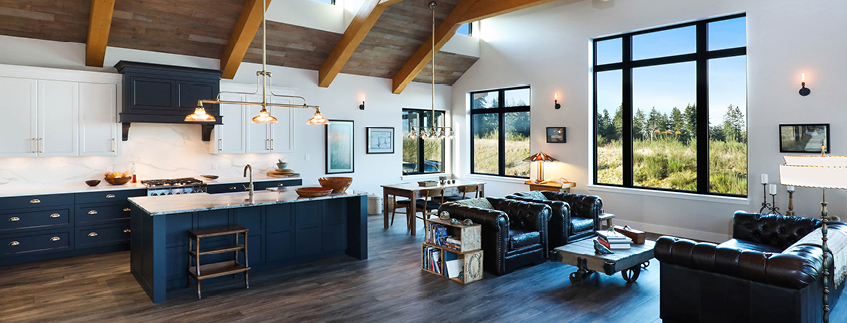
Photo credits: LSP Media
We’re helping residential builders and developers achieve Step 5 with our new home construction rebates. Learn more about how the New Home Program has evolved over the years and read our case studies to see how builders are constructing high-performance homes with advanced building envelopes and energy-efficient space and water heating.
New Home Program: 10 plus years and going strong
Since 2011, the New Home Program has been offering rebates to builders to encourage them to build energy-efficient homes. The program has evolved over the years—as have energy-efficiency requirements—and in 2018, we aligned it with the BC Energy Step Code. In 2020, we added the Design Offer to encourage collaboration through an integrated design process and uptake of building envelope and mechanical design. These activities all help contribute to a project’s successful achievement of Step 3, 4 or 5.
We’ve got rebates
Get details on all the rebates and options available through the New Home Program.
Note: final installation and application deadlines for some of our rebates.
Case studies: how builders are reaching higher steps
Regardless of the energy source used for heating and cooling, constructing a high-performance home starts with a building envelope that uses advanced airtightness layers and innovative insulation options.
These case studies demonstrate how home builders across B.C. are achieving higher steps of the BC Energy Step Code, with help from energy advisors and our New Home Program.
| Step 5, net-zero home, Kelowna An Integrated Design Process (IDP) was embraced to build this home, with stakeholders collaborating to streamline the design process, develop innovative approaches and reduce costs. The home integrates a dual-fuel HVAC system and uses Renewable Natural Gas1 (RNG) and solar PV generation to decarbonize the operation of the home and reduce the impact of electricity peak demand. |
| Step 4, detached home, Vancouver Building science and meticulous pre-construction planning were applied to build this home. Early collaboration between the builder and the home’s architect helped incorporate design changes that facilitated comfort and energy efficiency without compromising aesthetics or floor space. This home was designated as an “Air Barrier Champion" which required maintaining the integrity of the thermal envelope throughout the construction process, while applying other innovative techniques. |
| Step 5, detached home, Campbell River The builder incorporated passive solar design, strategically placed windows and overhangs and made careful material selections. |
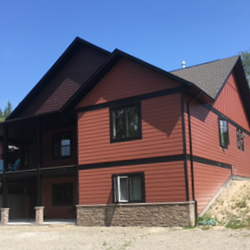 | Step 5, detached home, Quesnel Located in one of B.C.’s colder regions, this home achieved Step 5 by investing in the building envelope using insulated concrete foundation forms, double-framed 2x4 walls and additional rigid insulation. |
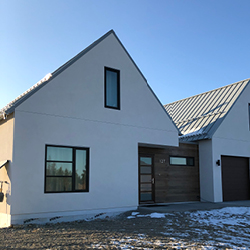 | Step 5, detached home, Kimberley The builder/owner incorporated passive solar design, Scandinavian architecture that minimizes the surface area of exterior walls and double-framed 2x4 exterior walls with three layers of R14 insulation. |
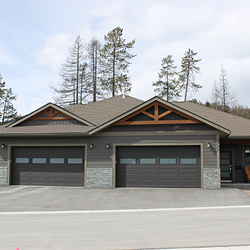 | Steps 4 and 5, duplex, Kimberley The homes in this seven-unit duplex project achieved Steps 4 and 5. The builder worked closely with an energy advisor throughout the project to incorporate passive solar and a high level of airtightness, building a Step 5 home for an additional $15,000. |
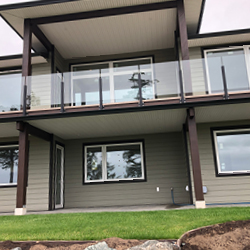 | Step 4, detached home, Campbell River By working with an energy advisor, the builder achieved Step 4 with improved airtightness, insulated concrete forms, R22 batt insulation and a high-quality commercial-grade air barrier. |
| Step 3, laneway home, North Vancouver This laneway home achieved Step 3 despite the limitations of municipal bylaws and a smaller plot. The home incorporated strategic window placements and meticulously installed air barrier and spray foam insulation. A compact mechanical system was needed to maximize living space in this home. |
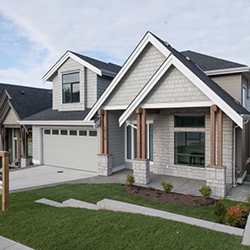 | Step 3, detached home, Maple Ridge Having limited experience with the BC Energy Step Code, this builder was motivated by a desire to build a more energy-efficient home. They built two similar homes in the same subdivision, one to BC Building Code and the other to Step 3, which was achieved by focusing on the building envelope and airtightness. |
RNG for new homes
Building a new home with gas provides your homebuyers with low-carbon options for their home’s energy needs, now and into the future. We’re increasing our supply of low-carbon2 RNG as the demand for low-carbon energy continues to grow.
Energy solutions managers are here to help
Not sure what rebate path is right for you or want to learn how an energy advisor can help you achieve a higher level of energy efficiency? Before breaking ground, contact a FortisBC energy solutions manager in your region.
| Cities | Contact |
|---|---|
| Vancouver to Whistler; plus Richmond, Burnaby and New Westminster | Norman Wong
|
| Delta, Langley, White Rock, Surrey | Jun Stojanovic |
| Abbotsford, Chilliwack, Hope, Coquitlam, Maple Ridge, Pitt Meadows, Port Coquitlam and Port Moody | Rob Zelisko |
| Cities | Contact |
|---|---|
| Capital Regional District | Spencer Evans |
| Mid-Island (Malahat to Lantzville and Port Alberni) | Jeff Coulombe |
| North Island and Sunshine Coast (Nanoose Bay to Campbell River, Powell River and Sechelt-Gibsons) | Greg Enns |
| Cities | Contact |
|---|---|
| East Kootenays, Central Okanagan, South Okanagan and Similkameen | Wade Benner Tel: 250-868-4554 Cell: 250-215-4564 Toll free: 1-855-868-4554 [email protected] |
| North Okanagan, Cariboo, Peace, Thompson-Nicola (including Revelstoke) and West Kootenays | Peter Hill |
1Renewable Natural Gas (also called RNG or biomethane) is produced in a different manner than conventional natural gas. It is derived from biogas, which is produced from decomposing organic waste from landfills, agricultural waste and wastewater from treatment facilities. The biogas is captured and cleaned to create RNG. When RNG is added to North America’s natural gas system, it mixes with conventional natural gas. This means we’re unable to direct RNG to a specific customer. But the more RNG is added to the gas system, the less conventional natural gas is needed, thereby reducing the use of fossil fuels and overall greenhouse gas emissions.
2When compared to the lifecycle carbon intensity of conventional natural gas. The burner tip emission factor of FortisBC’s current
Renewable Natural Gas (also called RNG or biomethane) portfolio is 0.27 grams of carbon dioxide equivalent per megajoule of energy (gCO2e/MJ). FortisBC’s current RNG portfolio lifecycle emissions for stationary combustion are -22 gCO2e/MJ. This
is below B.C.’s low carbon threshold for lifecycle carbon intensity of 30.8 gCO2e/MJ as set out in the 2024 Greenhouse Gas Reduction Regulation amendments.
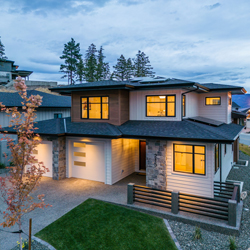
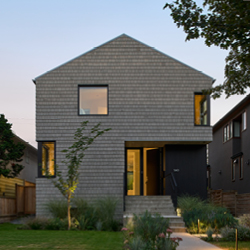
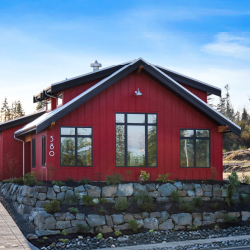
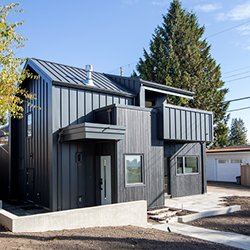 Photo credits: Janis Nicolay, Pinecone Camp
Photo credits: Janis Nicolay, Pinecone Camp